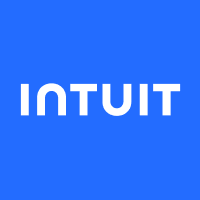
Intuitive Machines Product Designer (Engineering) – Behavioral Interview Template
This behavioral interview assesses how a Product Designer operates in Intuitive Machines’ safety‑critical, mission‑driven environment. The focus is on systems thinking, operator‑centered design for mission operations, collaboration with flight and ground software teams, and decision‑making under real‑world constraints (risk, schedule, and reliability). What this interview covers - Mission and values alignment: Evidence that the candidate is motivated by lunar/space exploration, embraces small‑team ownership, and balances speed with disciplined engineering. - Human‑in‑the‑loop/ops UX: Experience designing tools for operators/engineers (telemetry visualization, command workflows, alerts/alarms, checklists). Looks for understanding of workload, situational awareness, error prevention, and designing for degraded conditions (latency, dropouts, limited bandwidth). - Safety and compliance mindset: Habit of anticipating hazards, failure modes, and recovery paths; communicating risk clearly; comfort working within regulated or export‑controlled contexts (e.g., careful about sharing data, structured approvals). - Cross‑functional collaboration: Partnering with systems, avionics, flight software, GNC, test, and program management. Translating constraints into design requirements; negotiating trade‑offs between reliability, usability, and delivery dates. - Ambiguity and pressure: Operating around hard launch/test windows, anomaly response, and shifting requirements. Clear prioritization frameworks and calm escalation. - Evidence‑based design: "Test like you fly" mentality—rapid prototyping with operators, simulations/replays to validate flows, and metrics (task time, error rate, alarm response time, handoff clarity). - Documentation and traceability: Writing concise design briefs/RFCs, change logs, and linking design decisions to requirements and hazards; strong communication to execs and mission controllers. Structure (suggested 60 minutes) 1) Warm‑up and context (5m): Role, mission stage, candidate’s recent work. 2) Artifact deep‑dive (portfolio) (15m): Candidate walks through a safety‑critical or operations‑focused tool they designed. Probe for constraints, validation in simulations/tests, and how they handled alarms, permissions, and auditability. 3) Structured behavioral Q&A (25m): STAR‑oriented prompts plus follow‑ups (see below). 4) Values/culture and candidate questions (10m): Assess mission alignment and communication style. 5) Wrap‑up (5m): Explain next steps; confirm availability for potential panel/on‑site. Sample behavioral questions (with probes) - Tell me about a time your design decision had implications for mission/test risk. How did you assess, communicate, and mitigate that risk? (Probe: what artifacts—hazard analysis, FMEA inputs, checklists—did you use?) - Describe a time you designed for degraded or constrained conditions (e.g., high latency, limited bandwidth, noisy data). What trade‑offs did you make and how did you validate them? - Give an example of pushing back on a senior engineer or flight director to protect usability or safety. What data or simulations supported your position? Outcome? - Walk me through converting ambiguous stakeholder desires into testable acceptance criteria and telemetry/alert designs. How did you ensure traceability? - Tell me about an anomaly or post‑test incident that changed your design. How did you participate in the postmortem and translate findings into design changes quickly and safely? - How have you balanced a hard deadline (e.g., launch/test window) with insufficient usability evidence? What got cut and why? What did you protect? Signals to look for - Strong: System‑level framing; clear risk/assumption logs; designs that minimize human error; data‑backed decisions; concise docs; respect for procedures; comfort pairing with engineers and operators; measurable outcomes (reduced alarm fatigue, faster command sequences, fewer handoffs). - Mixed: Good craft but weak on traceability, little exposure to ops or safety reviews, relies on "delight" over reliability. - Red flags: Casual attitude toward risk/compliance, vague ownership during incidents, no evidence of validating designs in realistic scenarios, over‑indexing on visual polish vs operational clarity. Interviewer rubric (behavioral anchors) - Systems thinking & safety: 1–5 (maps user flows to failure modes; designs recovery paths; uses checklists/permissions thoughtfully). - Collaboration & influence: 1–5 (navigates strong technical personalities; brings evidence; earns trust). - Decision quality under pressure: 1–5 (clear priorities; communicates trade‑offs; prevents thrash near gates). - Evidence & iteration: 1–5 (sim/test usage; telemetry‑informed design; defines success metrics). - Communication & documentation: 1–5 (succinct, structured, stakeholder‑aware; maintains traceability). Candidate guidance (shared if appropriate) - Prepare a 1–2 artifact deep‑dive focused on operations/safety and show validation in realistic conditions. - Be ready to discuss how you balanced operator needs with engineering constraints and schedule pressure. - Expect probing on risk communication, design documentation, and post‑incident learning. Notes on style - Conversational but structured; expect follow‑ups that dig into constraints, metrics, and trade‑offs. - Emphasis on ownership, candor, and learning from anomalies rather than performing perfection.
60 minutes
Practice with our AI-powered interview system to improve your skills.
About This Interview
Interview Type
BEHAVIOURAL
Difficulty Level
4/5
Interview Tips
• Research the company thoroughly
• Practice common questions
• Prepare your STAR method responses
• Dress appropriately for the role